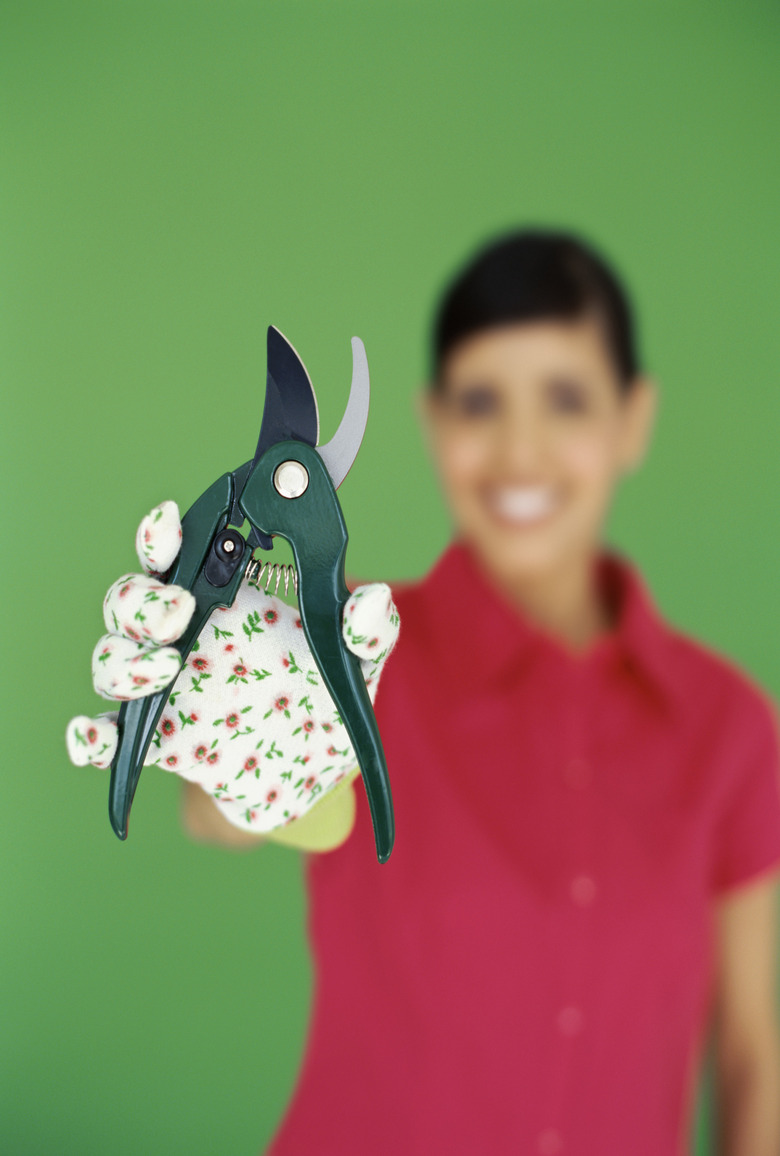Propagation Of Helichrysum Petiolare
Feel free to drop the formalities and call Helichrysum petiolare by its common name, licorice plant — most folks do. If you're familiar with dusty miller (Senecio cineraria), which grows in U.S. Department of Agriculture plant hardiness zones 8 through 10, you will notice the licorice plant's similar coloring. Like dusty miller, it casts a silvery glitter on the landscape. Grow the licorice plant in USDA zones 9 and 10 as a perennial, or elsewhere as an annual. The plant is propagated by cuttings or seed, but cultivars may not come true from seed.
Timing
Step 1
If you live in a warm climate, plant seeds outdoors in fall. In cooler climates, plant the seeds in spring after the danger of frost has passed. Trailing licorice seeds can also be started indoors, six to eight weeks before the last expected frost date. The seeds should germinate within 15 days. Take cuttings from current season's growth, some time in late summer.
- Feel free to drop the formalities and call Helichrysum petiolare by its common name, licorice plant — most folks do.
- In cooler climates, plant the seeds in spring after the danger of frost has passed.
Seed Planting
Step 1
Licorice plant seeds require a 24-hour pre-planting soak in room temperature water. Avoid damping off, a fungal disease, by sowing the seeds in a soilless planting mix. Because the seeds require light to germinate, set them on top of the mix and press lightly on them to ensure seed-to-soil contact. Provide bottom heat — 68 to 70 degrees Fahrenheit — and ensure the seeds remain moist while they germinate. If you are planting directly outdoors, choose a site that receives full sun. Follow the same depth recommendations, but cover the seeds lightly with sand to protect them from birds.
Taking Cuttings
Step 1
The best way to ensure that your licorice plant will be identical to the parent is by propagating from cuttings. Take cuttings from the current season's growth that have woody bases and a soft, new tips. Cut 4 to 6 inches of stem, just below a leaf. Wrap the cutting in a moist paper towel and place it in a plastic bag. Don't expose the cutting to direct sun or it will dry out.
- Licorice plant seeds require a 24-hour pre-planting soak in room temperature water.
Preparing Cuttings
Step 1
Leave at least four leaves near the tip of the licorice plant cutting so it can carry out photosynthesis while it produces roots. Remove all of the lower leaves and discard them. Pinch the softest part of the tip of the cutting as well and discard that. To avoid contaminating the entire jar of rooting hormone, pour out a dime-sized dollop into a small saucer and dip the cut end of the cutting in water and then roll it in the hormone powder. Because the cutting will produce roots at the nodes, ensure at least two leaf nodes are covered in the powder. Nodes are the swellings where the leaves meet the stem.
Planting Cuttings
Step 1
To prevent the cuttings developing rot, plant them in a loose, well-draining medium. Equal parts of a quality potting soil and coarse sand works well. Plant the cuttings deep enough so the hormone-covered nodes are beneath the surface. Give the licorice plant cuttings indirect sunlight and keep the planting medium just barely moist. If the air in your home is particularly dry, create a mini greenhouse for the cutting. Insert chopsticks or twigs into the soil at the interior edges of the pot and then slip the pot into a plastic bag. Adjust the plastic so the sticks hold the plastic away from the cuttings and seal the bag. Place the bagged cuttings in an area that receives indirect sunlight. The cuttings should root within three to four weeks.
- Leave at least four leaves near the tip of the licorice plant cutting so it can carry out photosynthesis while it produces roots.
- Because the cutting will produce roots at the nodes, ensure at least two leaf nodes are covered in the powder.
